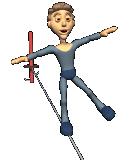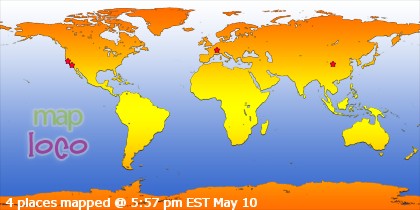
Wildlife Safari began breeding cheetahs in 1973, with the first successful litter of four cubs born to Kruger (male) and Trian (female). Since then, 38 litters and 149 cheetahs have been born at the park. These statistics place Wildlife Safari as one of the top breeders of cheetahs in the U.S. and the western hemisphere. Through our partnership with the American Zoo and Aquarium's (AZA) Species Survival Plan for cheetahs, cubs born at the park have populated zoos across the U.S.
The addition of new genetics to the population and the promise of cubs are significant to the U.S. population of cheetahs, as according to the breeding recommendations from the AZA's Cheetah SSP, the number of cubs born in the U.S. dropped significantly during the 1990s. If American zoos are to maintain a sustainable population of cheetahs, successful breeding must increase and remain at a high level through the rest of this decade. Having these amazing cats in zoo populations allows us to educate our guests and conduct research that helps the endangered cheetah both in captivity and the wild.
Cheetahs (Acinonyx jubatus ) are native to Africa, with 12,000 in 25 African countries and 100 - 200 animals in Iran . The largest African population is in Namibia with 2,500 animals. Cheetahs are endangered due to habitat loss, poaching and hunting by farmers worried about their livestock. An average cheetah weighs between 80 - 130 lbs. They are carnivorous, and prey on gazelles and other small to medium-sized hoofstock. Cheetahs live, on average, six to eight years in the wild and ten to fifteen years in captivity.
Cheetahs are the fastest land mammal and can reach speeds of 70 miles per hour for short sprints. They are built for speed with a deep chest for large lungs and a powerful heart. They have a stride length of 20 feet. This is the distance between a foot touching the ground and that same foot touching the ground again. A cheetah's spine is very flexible, flexing and extending to help lengthen its spine. Their hind legs push sequentially rather than together like other animals, so all four feet are off the ground at one time, giving the cheetah the appearance of flight. The tail serves as a rudder and as a brake during high speed pursuit. 
CHEETAH CUB UPDATE
December 2008
This year the cheetah team had an exciting opportunity to work on a very special cheetah research project! Drs. Adrienne Crosier and Pierre Comizzoli of the Smithsonian’s National Zoo, and Drs. Autumn Davidson and Tomas Baker of UC Davis, arrived at Wildlife Safari with the purpose of improving reproduction of captive cheetahs. The Smithsonian team started a new study that involves collecting mature egg cells from older genetically valuable female cheetahs. The goal of this study is to develop a technique to eventually create embryos for transfer into younger surrogate cheetahs. This study was begun, by harvesting mature eggs from three female cheetahs here at Wildlife Safari. This process has the potential of dramatically increasing the captive cheetah population world wide.
Another objective of the visit was to refine a method of non-surgical artificial insemination (AI). Since 1991, the surgical method has only produced nineteen cheetah cubs. To improve the success rate of AI pregnancies, Dr. Autumn Davidson has been attempting to refine a non-surgical method of AI in cheetahs. That success was reached when she found the right combination and size of endoscope and catheter which allowed a trans-cervical pass into the uterine horns of three different cheetahs. The testing will continue now, but this new procedure will make it possible to infuse sperm and potentially transfer embryos directly into the uterine horns without surgery. The research team did Artificially Inseminate one of our own cheetah females, Mopane. It is difficult to physically tell if cheetahs are pregnant, so we are all keeping our fingers crossed for the potential upcoming due date.
The Wildlife Safari will be participating early next year in another fascinating cheetah research project. This one will have to do with urine analysis and figuring out if female cheetahs are more likely to breed with the urine smells of more than one male around.
It has been a very busy year in the cheetah department with three of our cubs from last year shipping out to other AZA facilities. Make sure to stop by and see the other 8 cubs from last year that are currently in the cheetah drive thru. Also don’t forget to say hi to Taini, our ambassador cheetah who spends her days in the Wildlife Safari’s village.
August 2007
Wildlife Safari announces the births of three litters of cheetah cubs (11 cubs) born this summer!
The first litter, born on Easter Sunday (April 8) numbered four cubs, two boys and two girls. This was the second litter for mother Missy and the third litter for father, Lexus. These cubs were named through two different naming contests. One was an essay contest and one was an ebay auction. The names chosen were: Storm, Amiri, Tumai and Moonfire.
Our second litter of three cubs was born May 1; One boy, Scooter, and two girls, Suseli and Ally. These cubs are of particular genetic value to the survival of captive cheetahs. Both their mother, Annie, and father, Hulets, are ranked in the top five bloodlines in the country. We received both of the cats as aging adults. They came to us from different breeding facilities where neither had successfully produced cubs. Not only are these cheetahs cubs uniquely valuable to the world and their species, our success in creating a successful breeding between these animals is a testament to our program and people. Annie cared for her four cubs until two months of age, when she inexplicably rejected them after a routine vaccination. Since then, these three cubs have lived in an intensive management area in the cheetah drive-thru. The keepers are working to habituate the cubs to people and establish a bond. The cubs are still frightened easily but are coming around. They like to sniff toes and pull on pant legs.
Our newest litter was born June 15. These cubs share the same father as the May cubs, and their mother is another first time mother. Liz (mother) is an extremely valuable cheetah genetically, and so far is raising her cubs successfully. This litter has two boys and two girls as well.
Wildlife Safari is very proud of our cheetah breeding success. Very few zoos or wildlife parks are able to breed cheetahs at all, and we have them coming out of our ears. Be sure to come to the park and see our eldest cubs on exhibit with their mother in the drive-thru. Cutest things on earth! 
Terms of Use and Privacy Policy Wildlife Safari is a registered 501(c)(3) non-profit organization.
© 2009 Wildlife Safari
Tuesday, January 27, 2009
....Cheetah Breeding Program Winston Oregon....
Subscribe to:
Post Comments (Atom)















0 comments:
Post a Comment